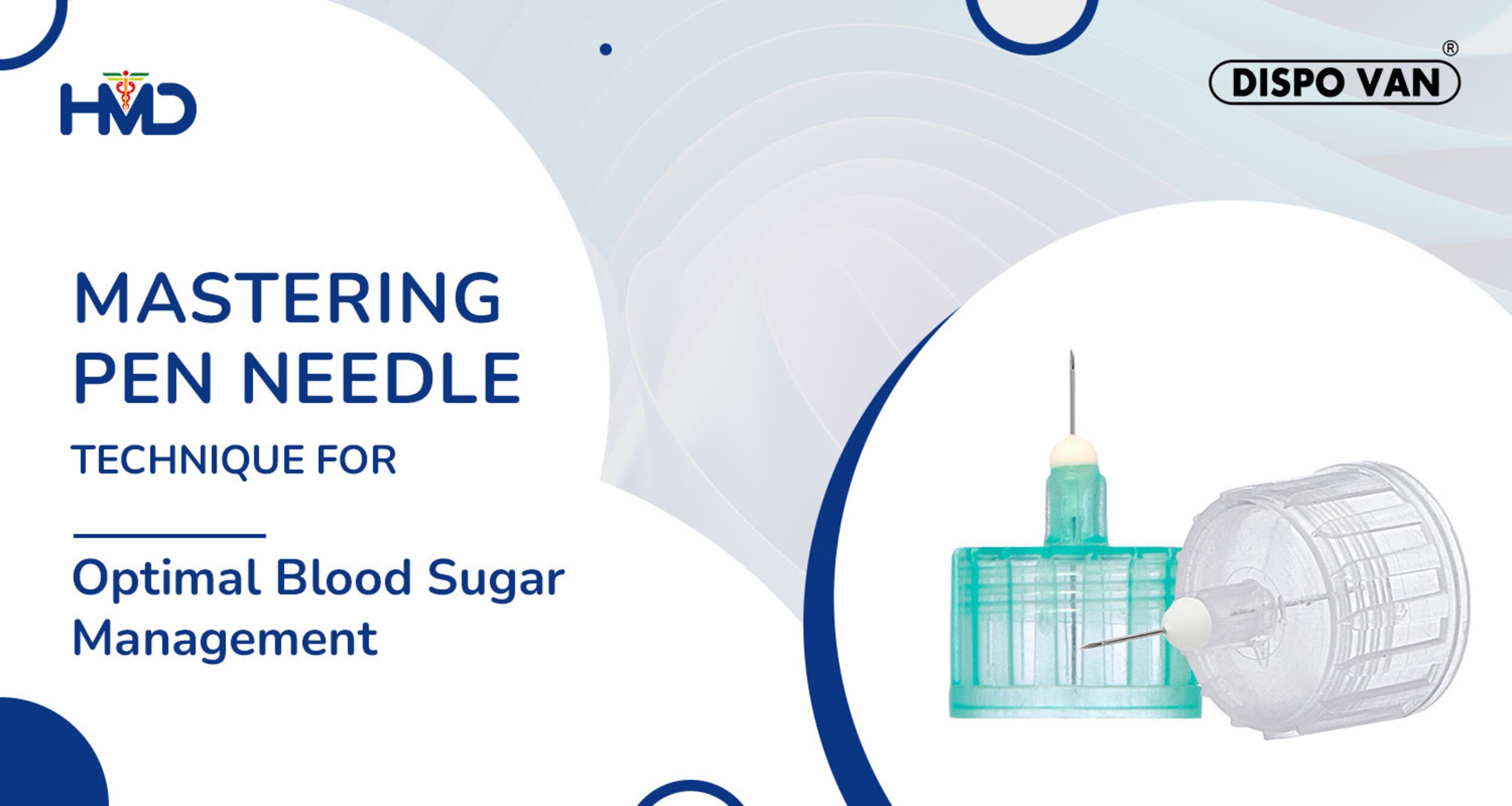

People with Type 1 and Type 2 diabetes need to actively manage their blood sugar levels for a healthy life. While dietary factors and exercise play a crucial role, the comprehensive treatment for blood sugar control necessitates the use of insulin.
Insulin pens stand out as the most popular method for administering insulin. These safe and convenient instruments allow diabetic patients to manage their insulin dose with ease. However, it is crucial to employ the correct technique to ensure the effectiveness of the treatment. The improper technique can endanger the patient’s well-being. To prevent such risks, this blog provides instructions on the proper utilization of an insulin pen needle.
Pen Needle Technique
Studies highlight the use of the shortest needle possible to prevent intramuscular injections, which may lead to rapid, unpredictable drops in blood sugar levels. A 4mm needle is advised for individuals of all ages, including children and lean adults, to ensure the delivery of insulin into subcutaneous fat. Avoid injecting through clothes or into areas with lipohypertrophy or other skin abnormalities.
To ensure effective diabetes control through the correct pen needle technique, follow these steps:
Step 1: Use a blood glucose monitor to check blood sugar levels before injecting insulin, particularly rapid-acting insulin, before meals.
Step 2: Ensure your hands are clean before starting the treatment.
Step 3: For reusable pens, load the insulin cartridge. Check the expiration date and inspect the insulin. If using NPH or premixed insulins, gently mix them. Let refrigerated insulin warm to room temperature for less painful injections.
Step 4: Use a new needle for each injection. Cleanse the rubber seal with an alcohol wipe before attaching the needle.
Step 5: Prime your insulin pen to remove air bubbles and ensure the needle is not blocked.
Step 6: Set your pen to the correct dosage as described by your healthcare provider.
Step 7: Choose the injection site and clean it with an alcohol swab.
Step 8: Hold the pen properly and insert the needle at a 90-degree angle.
Step 9: Press the injection button and hold for 10 seconds to administer the dose fully. Check the dose window before withdrawing the needle.
Step 10: Dispose off the needle in a sharps container and store the insulin pen properly.
Single use of Pen Needles
Pen needles are designed to deliver a dose of insulin just once. Reusing of Pen Needles increases pain, risk of lipohypertrophy formation and chances of incorrect dosing which can be caused by needle blockage due to tissue residue or crystallised insulin from the previous injection. So it is advised to follow the single use of a new Pen Needle for every injection for one’s own safety.
Site Rotation and Management
Rotating injection sites is essential to minimise the risk of lipohypertrophy and ensure consistent insulin absorption. The abdomen is the preferred site due to its faster absorption rate, followed by the arms, thighs, and buttocks. Further, engaging in regular exercise can increase the absorption rate from these sites.
Conclusion
Ensuring the proper pen needle technique is vital for effective diabetes management. Regular consultations with healthcare professionals for personalised advice and addressing complications are also essential.
A comprehensive approach to managing diabetes includes quality products from HMD designed to standardise insulin absorption, leading to increased effectiveness and improved diabetes control.
Visit the HMD website today to explore our range of high-quality pen needles.

Add Comment